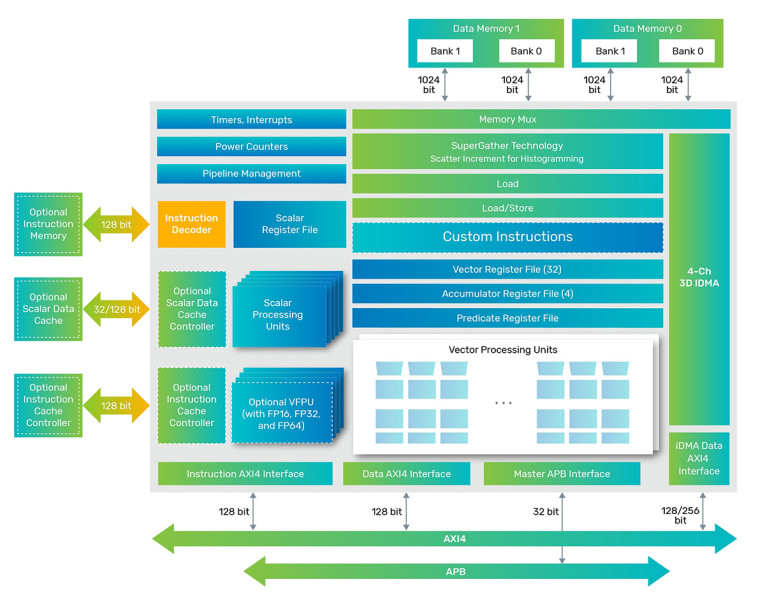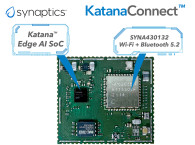
There has been strong customer interest in the Vision Q8 and Vision P1 DSPs, with several evaluations underway. The new DSPs round out Cadence’s comprehensive portfolio of proven vision and AI DSPs, offering developers even greater design flexibility with best-in-class technology.
Based on the similar SIMD and VLIW architecture found in the existing Tensilica Vision DSPs, the Vision Q8 and Vision P1 DSPs feature an N-way programming model that preserves software compatibility for an easy migration from prior-generation Tensilica Vision DSPs with different SIMD widths. Like the rest of the Tensilica Vision DSP family, the Vision Q8 and Vision P1 DSPs support Tensilica Instruction Extension (TIE) language, allowing developers to customize the instruction set. Both DSPs also support Xtensa Neural Network Compiler (XNNC) and the Android Neural Networks API (NNAPI) for neural network support. In addition, they support more than 1700 OpenCV-based vision library functions, OpenCL and the Halide compiler for computer vision and imaging applications. Both cores are automotive ready with ASIL B hardware random faults and ASIL D systematic fault certification.

Of particular interest for consumer applications, the new Tensilica Vision P1 DSP is optimized for always-on applications including smart sensors and connected/smart home devices. Featuring a 128-bit SIMD with 400 giga operations per second (GOPS) the new DSP offers one-third the power and area plus 20 percent higher frequency compared to the widely deployed Vision P6 DSP, while its architecture is optimized for small memory footprint and operation in low-power mode.
“The sheer number of sensors, as well as demands for higher frames per second and resolution, are driving the need for high-performance vision and AI DSPs that support a variety of data types,” says Sanjive Agarwala, corporate vice president and general manager of the IP Group at Cadence. “At the same time, the market also needs low-power vision DSPs with entry-level AI support for always-on smart sensor applications. With the introduction of the Tensilica Vision Q8 and Vision P1 DSPs, Cadence offers our customers optimal flexibility and faster time to market with a comprehensive portfolio of vision and AI DSPs from the high end to the low end.”
“The use of 3D sensors and different types of sensor technology continues to grow in the mobile, automotive and AR/VR markets,” says Mike Demler, senior analyst at the Linley Group. “All of these markets are increasingly demanding high-performance vision and AI processing with low power for edge applications. To meet these requirements, SoC designers are seeking hardware IP with a range of performance points. Cadence has a proven track record of successfully delivering six generations of Tensilica Vision DSPs, and with the introduction of these two new DSPs to the lineup, Cadence remains a compelling choice for SoC designers.”
The Tensilica Vision Q8 and Vision P1 DSPs support Cadence’s Intelligent System Design design strategy. The Tensilica Vision Q8 DSP is available now, while the Tensilica Vision P1 DSP is expected to be available for general release in the second quarter of 2021.
www.cadence.com






